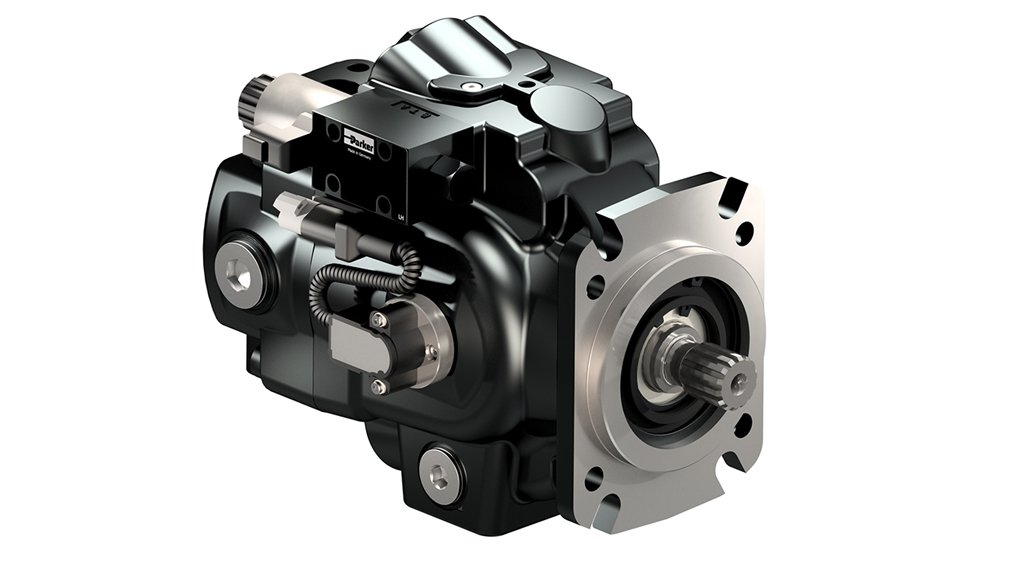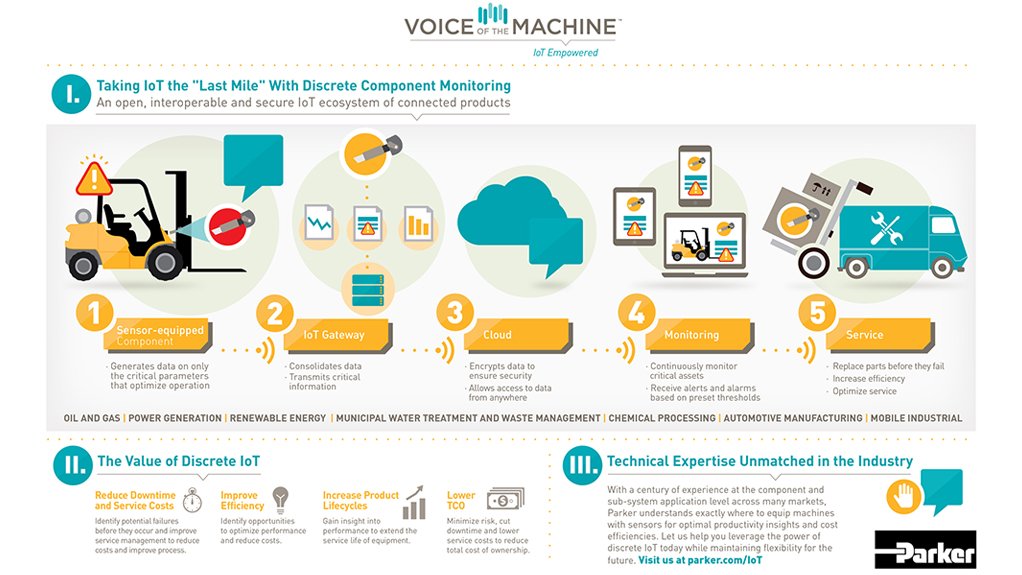Taking a discreet approach to production digitalisation
This article has been supplied as a media statement and is not written by Creamer Media. It may be available only for a limited time on this website.
As Industry 4.0 continues to unfold, increasing numbers of manufacturers, big and small, are seeking the best opportunities to increase the automation of their industrial processes and improve productivity. However, how many fully understand the various aspects of digitalisation and its practicalities? Perhaps more pertinently, what can be achieved right now, and at what pace should it be implemented?
The adoption of digital systems and factory connectivity is clearly of significant competitive advantage. However, most are still getting to grips with the results that can be realised, and the associated benefits they can derive.
Different needs
Looking at the current market, there appear to be two categories of manufacturer looking to digitise their operations: those that want to restructure the whole company to make the most of the latest digital technologies and have a fully automatic factory; and those seeking a more ‘discreet’ approach, namely the gradual equipping of components with digital connectivity and making them visible in the cloud via the IoT.
The latter does not demand a complete revolution of the company, rather a strategy that helps manufacturers to see initial results, such as the registration of data coming from the machines, and the alarm settings and data analysis of the production cycle for example. These are the first steps that allow a company to gear-up and develop internal capabilities on the path to full automation.
One of the initial hurdles faced by many manufacturers is that their machines, systems and equipment communicate in different protocols. Here, the goal of IoT facilitators is to bring together the different systems in one shared platform – at Parker Hannifin this platform is called Voice of the Machine®. In fact, it will likely not be long before a centralised database exists for all products, indispensable for a tomorrow when thousands, if not millions, of components will be interconnected. In such a concept, a unique code will identify all the features of a product, which will have both a physical and digital appearance (a digital twin).
As a step towards this future, the IO-Link communication protocol has been introduced on the whole range of Parker equipment. IO-Link allows users to enlarge the number of devices connected and integrate components in the system.
Infrastructure platform
As part of a macro strategy, all products enabled by the IoT will be connected in an infrastructure platform such as Voice of the Machine®, which also includes software, a platform in the cloud and a dashboard-style front end. Through this architecture, every machine, component or system can communicate securely with others thanks to a common structure of standard protocols and shared principles.
A typical component helping to facilitate digital manufacturing environments is the smart sensor, which, using a wireless or Bluetooth connection, is able to record pressure, temperature and humidity values. Such sensors are easily installed and eliminate the issues associated with hard wiring. They can be visualised on a smartphone app, allowing users to view the data collected, along with initial analysis routines.
More and more industrial components are being equipped with a digital interface. Importantly, solutions of this type are not just for new-build machines; it is possible to place smart sensors at critical points in existing systems, and equip them with a gateway for connection to the cloud. Specially devised retrofit kits are available complete with all the necessary sensors to make this passage. Once installed, the maintainer receives any alarm events on their smartphone, without having to go looking for them on site or on a remote display.
Predictive maintenance
Of course, predictive maintenance is the goal of many modern manufacturing businesses: a strategy that can be aided tremendously by digitalisation. Using the data collected from smart sensors, it is possible for advanced algorithms or accurate data analysis to predict when a specific component or system will need replacement or maintenance. Moreover, some developers of IoT technology can now provide specially developed functional modules that present a digital representation of objects and, using special algorithms, make predictions that lead to plant optimisation based on the data collected.
Take a hydraulic system, for example, where one of the most common faults is contaminated oil. With this thought in mind, a first approach towards efficient predictive maintenance must be a real knowledge of the oil conditions within the circuit. This knowledge is facilitated by sensors and equipment that allow complete monitoring of oil health. The point here is that the company must also change its approach as they often underestimate the importance of having proper fluid health monitoring, which if ignored can cause enormous damage. Thus, a complete management service for fluid health is required.
A complete solution involves a wide range of sensors and instruments that permit a detailed analysis of fluids for each type of contaminant and precise monitoring conditions: periodic or continuous. Following diagnostics, the contaminants can then be removed from hydraulic systems to extend the useful life of the fluid, and prevent unwanted and expensive machine stoppages.
Measured pace
From observations to date, while there is a deep interest in the IoT among manufacturers, the adoption of facilitating technologies will almost certainly be at a measured pace in most instances. Even many large companies are still not equipped with the staff and appropriate software required for the correct analysis of the large amount of data they will be collecting.
Data analysis is a complex job. Small businesses need a vertical solution: component, gateway, cloud, software and a complete management service. Bigger companies, on the other hand, which already have their platform in place, are more interested in digital components and functional modules that fit as ready-made plug-ins, generating not only data, but analysis of the results.
Taking a holistic view, there is no question of whether the revolution digital will happen or not; it is only a question of when and at what rate. In the meantime, manufacturers would do well to make themselves protagonists of this revolution: a strategy that will aid the permeation of digital technologies as part of a discreet approach.
Motion Systems
Comments
Announcements
What's On
Subscribe to improve your user experience...
Option 1 (equivalent of R125 a month):
Receive a weekly copy of Creamer Media's Engineering News & Mining Weekly magazine
(print copy for those in South Africa and e-magazine for those outside of South Africa)
Receive daily email newsletters
Access to full search results
Access archive of magazine back copies
Access to Projects in Progress
Access to ONE Research Report of your choice in PDF format
Option 2 (equivalent of R375 a month):
All benefits from Option 1
PLUS
Access to Creamer Media's Research Channel Africa for ALL Research Reports, in PDF format, on various industrial and mining sectors
including Electricity; Water; Energy Transition; Hydrogen; Roads, Rail and Ports; Coal; Gold; Platinum; Battery Metals; etc.
Already a subscriber?
Forgotten your password?
Receive weekly copy of Creamer Media's Engineering News & Mining Weekly magazine (print copy for those in South Africa and e-magazine for those outside of South Africa)
➕
Recieve daily email newsletters
➕
Access to full search results
➕
Access archive of magazine back copies
➕
Access to Projects in Progress
➕
Access to ONE Research Report of your choice in PDF format
RESEARCH CHANNEL AFRICA
R4500 (equivalent of R375 a month)
SUBSCRIBEAll benefits from Option 1
➕
Access to Creamer Media's Research Channel Africa for ALL Research Reports on various industrial and mining sectors, in PDF format, including on:
Electricity
➕
Water
➕
Energy Transition
➕
Hydrogen
➕
Roads, Rail and Ports
➕
Coal
➕
Gold
➕
Platinum
➕
Battery Metals
➕
etc.
Receive all benefits from Option 1 or Option 2 delivered to numerous people at your company
➕
Multiple User names and Passwords for simultaneous log-ins
➕
Intranet integration access to all in your organisation

























